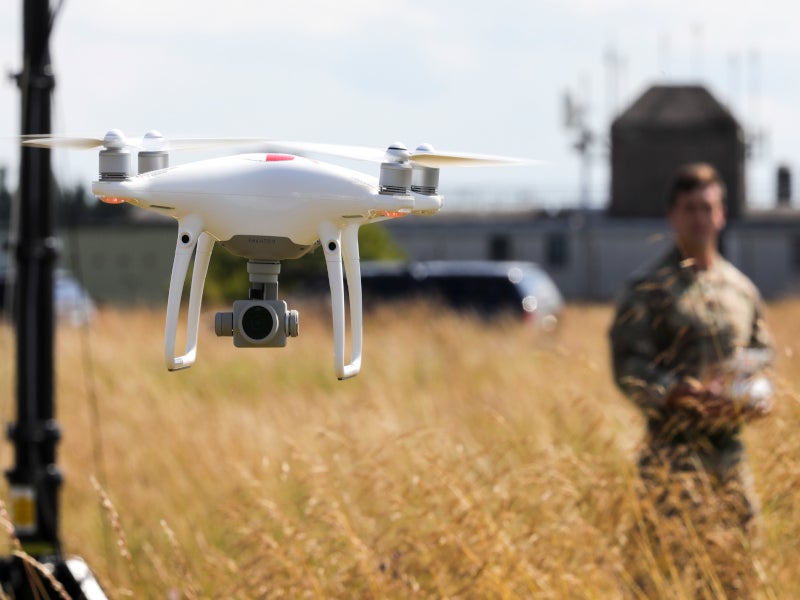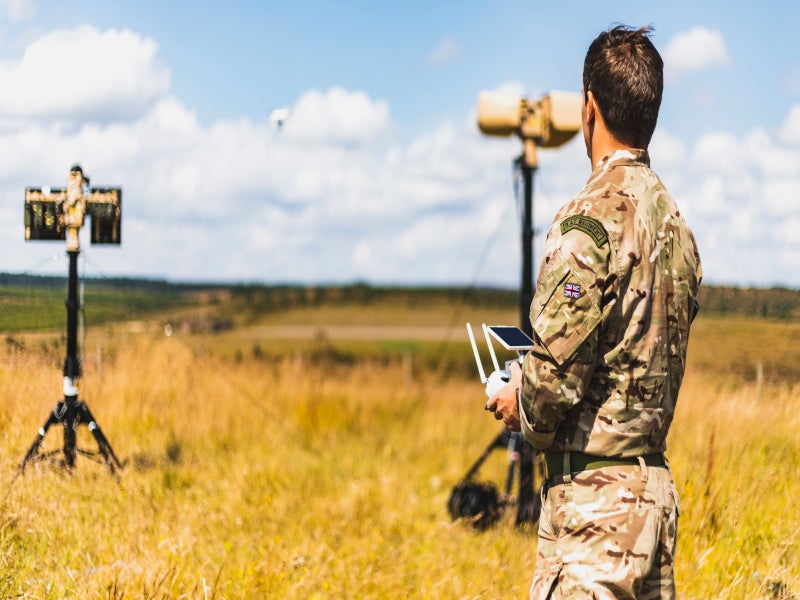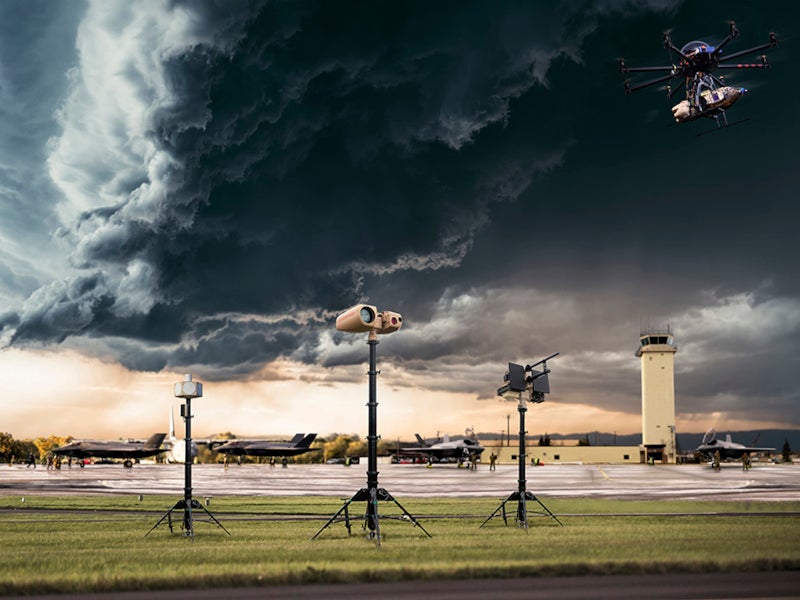The ORCUS counter-unmanned aerial system (C-UAS) is operated by the UK Royal Air Force (RAF) to support emergency operations in response to any drone-based crisis in the UK and overseas.
ORCUS is also being maintained as an upgraded national standby capability, which can be rapidly deployed anywhere in the country to provide emergency military aid to civil authorities in case of any drone-based crisis.
The system has been successfully deployed in response to drone sightings at civilian airports in the UK.
The Queen’s Colour Squadron, the RAF’s ceremonial unit falling under 2 Force Protection Wing, was trained on the ORCUS C-UAS in their field role, 63 Squadron RAF Regiment, at RAF Spadeadam in September 2021.
RAF Regiment Gunners from 2 Force Protection Wing based at RAF Leeming received training on the ORCUS C-UAS in August 2022.
ORCUS C-UAS development details
ORCUS plays a pivotal role in improving the RAF’s knowledge on deploying technology to tackle the threat posed by hostile drones. The C-UAS was developed as part of the Synergia research and development (R&D) programme managed by Defence Equipment & Support’s (DE&S) Future Capability Group.
The DE&S, part of the UK Ministry of Defence (MOD), is responsible to equip and support the UK Armed Forces.
Leonardo delivered the first complete baseline ORCUS drone system to the RAF to support the Synergia C-UAS R&D programme in September 2020.
The company delivered four complete baseline ORCUS systems to the RAF. It also integrated the US Air Force Research Laboratory (AFRL)’s negation of improvised non-state joint aerial threats (NINJA) technology into the ORCUS counter-drone system in September 2021.
The ORCUS system integrated with NINJA technology achieved initial operating capability (IOC) following the successful testing of the integrated detect, track, identify, and defeat technologies, in September 2020. It completed system evaluation at the RAF Spadeadam’s electronic warfare tactics facility in Cumbria in August 2021.
The ORCUS system is also being used to test and evaluate other counter-drone equipment and technology, including advanced radar, electro-optic (EO) and radio frequency (RF) sensors, as well as electronic attack countermeasures.
Its capabilities will help identify the most effective response to a drone incursion as the UK plans to equip the armed forces with advanced counter-drone technology to respond to emergency situations during drone incidents.
ORCUS C-UAS design and features
ORCUS C-UAS is a modular and scalable R&D system, which can be deployed to detect, track, identify and defeat hostile drones to provide protection to the UK military bases and assets.
Weighing three tonnes, the system is adaptable in size and can fit in the back of a Chinook helicopter. A central control system controls multiple sensors and effectors to detect, track and defeat adverse drones.
The C-UAS provides 360o coverage in all weather conditions, both during day and night.
The ORCUS system is equipped with the Leonardo Guardian system, which provides a long-range ‘electronic sniper rifle’ jamming effect.
The US-developed NINJA technology provides a similar surgical cyber effect at a shorter range, taking control of or disabling a hostile drone. NINJA manoeuvres the drone to a safe location after taking control of its protocols.
Sensors
The ORCUS counter-drone system incorporates SKYPERION, a passive RF detection sensor system used for drone detection, tracking and identification.
The multi-sensor SKYPERION solution identifies and locates the data signals emitted by both the drone and its controller.
It provides early and accurate detection and tracking of drones. The system is capable of tracking multiple unmanned aerial vehicles (UAVs).
Contractors involved
Leonardo provided the C-UAS technology for the development of the ORCUS system.
METIS Aerospace, an aerospace company based in England, delivered the SKYPERION drone detection system for the ORCUS C-UAS development in January 2020.
SRC, a defence R&D company based in the US, is also involved in the project development.










